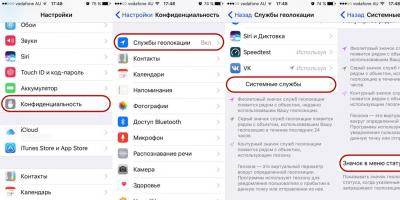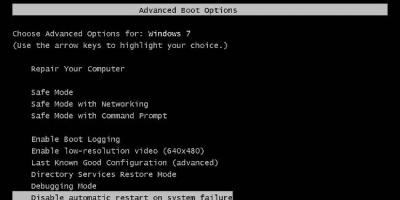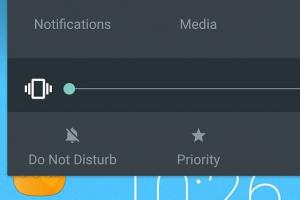A modern and fashionable tablet computer is a real golden mean between a smartphone and a desktop computer, laptops. It is such a gadget that compatriots take with them on the road, for a walk, on a trip, business trip and to a meeting. The demand for tablets is constantly growing, but most potential owners do not even have at least a rough idea of what kind of device they need. It is necessary to resolve the issue not only about the choice of the manufacturer and the internal "stuffing" of the device. tablet screen resolution deserves special attention - which is better? This question is answered by industry experts.
Tablet screen resolution: what should it be?
The first decision regarding the future of the tablet is to choose the size of its diagonal. The vending model should be convenient not only for watching films and TV shows, but also for working and communicating, surfing the Internet - all that the future owner has planned for himself. Modern technology - from the cheapest to the most expensive options - allows you to choose devices with different types of screens. Variations can reach both the minimum mark of 480 * 854 pixels and the maximum possible at the moment - 3264 * 2448 pixels. It is important to remember that this characteristic affects not only the quality of the picture, the speed of changing images, but also the cost of the goods.
To make it easier for customers, industry experts have determined the comfort threshold (it depends on the size of the screen diagonal) and is for tablet computers:
- 7 inches - 1024*600 pix.
- 10 inches - 1024*600 pix.
The higher the indicated indicator, the more comfortable the use of the proposed device will be. The real revolutionary of the industry was the apple company, which was the first to offer a screen resolution of 2048 * 1536 pixels.
Tablet screen resolution: from cheap to expensive
Depending on the size of the budget that is planned to be spent on the purchase of a tablet, devices of the following categories can be distinguished:
- Cheap with a small screen - 800 * 480 pixels.
- Cheap standard sizes - 800 * 600 pixels.
- The middle price segment with a small screen is 1024*600 pixels.
- The average price segment with a standard screen is 1024 * 768 pixels.
- The optimal ratio of quality and price is 1280*800 pixels.
- A good option is 1366 * -768 pixels.
- Expensive products - 1980 * 1080 pixels.
A tablet is a modern and fashionable mobile device that is the golden mean between smartphones and laptops. This gadget is indispensable for long walks, trips, business meetings, etc. It is thanks to the tablet computer that you can access all the necessary information at any time, both on the World Wide Web and personal files, whether it be documents, videos, music, articles or social networks, regardless of your current location.
How to choose a good tablet?
Due to the large number of devices on the market, the question arises how to choose a tablet so that it satisfies all our requirements. To do this, we will select a device based on 10 main criteria.
1. Screen size

When choosing a tablet, first of all, pay attention to the diagonal of its screen. The modern market offers devices with a diagonal of 5 to 13 inches, but the most popular models with a diagonal of 7, 8 and 10 inches.
The main advantage of a 7-inch tablet is its portability. The tablet is quite compact and practical - it fits comfortably in your hand. Most importantly, it can be easily put in your pocket, which is very convenient in the modern world. However, if you want to get a little more visualization out of the tablet, then you should get an 8-inch device or even more.
With a fairly large screen (by tablet standards), 10-inch tablets are great for home use. On such a device, you can safely watch your favorite movies or read interesting books without losing picture quality. At the same time, such a tablet remains quite mobile.
2. Screen resolution

Having decided on the diagonal of the tablet, be sure to pay attention to the screen resolution of the model you like. Screen resolution is the ratio of the number of pixels across the width and length of a device's display. The screen resolution of the tablet can range from 480x854 to 3264x2448 pixels. It is this characteristic that significantly affects the quality of the output image.
The comfort threshold for tablet computers is set depending on the diagonal of the device, for example:
- for 7-inch tablets - 1024 x 600 pixels;
- for 10-inch - at least 1280 x 800 pixels.
As a result: the higher the resolution of the display on the tablet, the better the quality of the displayed picture. So, Apple revolutionized this direction by showing the world a display based on Retina technology - the resolution of such a screen is 2048 x 1536 pixels. Due to such a huge resolution, the human eye cannot see the pixels on the screen.
3. Screen type

An equally important parameter is the type of screen. And if just a couple of years ago, all tablet computers worked on resistive displays, now it's time for capacitive ones.
The main difference between capacitive and resistive display is:
- better color rendering;
- brighter and more contrast picture;
- reduced touchpad response time;
- display reaction only to direct contact with a finger;
- implementation of the Multi Touch function, which allows you to scale the image, change its angle, change the volume mode, and so on.
By the way, resistive displays are still used in children's tablets because of their increased durability and response to indirect touch.
4. Operating system

The most heated discussion of recent years: which operating system is better for mobile devices - iOs, Android or Windows. Let's analyze the main advantages and disadvantages of each of them.
4.1 Benefits of Android (Google developer):
- great popularity among users;
- intuitiveness and simplicity;
- versatility - suitable for any device;
- a wide range of developed applications;
- the possibility of individual visualization of the interface (screen, icons, etc.);
The main drawback of Android is its high power consumption - devices that run on this operating system require frequent recharging.
4.2 Benefits of iOS:
- elitism of the operating system - works only on Apple devices;
- practicality and beauty of the interface;
- fast and stable work;
- low energy consumption;
- high resistance to virus attacks;
- quality applications.
The disadvantages of such an operating system are much greater than those of Android. Firstly, this is a small database of free applications for these devices. Secondly, there is no possibility of individual personalization of the interface. Thirdly, data transfer from such devices is much more complicated due to the need to install additional applications and programs, like iTunes.
4.3 The advantages of Windows include the versatility of the system and its multifunctionality and multitasking. This is the same operating system that is installed on a personal computer. But the disadvantages of such an operating system include significant malfunctions and violations in software processes, with which Microsoft has been struggling for many years.

Tablet memory is divided into two categories, built-in and expandable. The minimum amount of memory that is found in our time is 256 MB. The upper bar is limited only by the time frame - already now there are devices with a total memory of 750 GB! However, in the most common tablet models, the amount of memory is 16, 32 or 64 GB.
Most tablet computers have a slot for external memory, which, if necessary, allows you to increase its volume. When buying a memory card, pay attention to its compatibility in terms of type and amount of memory. The most common types of memory cards include:
- SD card;
- XD map;
- mini SD card;
- micro SD card;
It is also important to support a memory card in terms of volume. For example, if the device you are interested in has restrictions on the amount of additional external memory in the amount of 32 GB, then by purchasing a 64 GB memory card, the tablet simply will not “see” it.
Some devices, due to their design features or the policy of the manufacturer (such as Apple), do not have slots for additional memory. In this case, it is better to play it safe in advance and purchase a tablet with the maximum amount of internal memory.

One of the main attributes of a tablet is its mobility, and, accordingly, without a Wi-fi adapter and a 3G communicator, this is simply impossible. It is thanks to the presence of such adapters that access to the global Internet becomes real.
Most tablets support 3G network, and some support 4G. To do this, just insert a SIM card into your tablet, select a 3G connection and the tablet is ready to surf the Internet. Although the 3G network is available almost everywhere where there is a mobile operator coverage, its speed is still negligible compared to Wi-Fi access. Therefore, it is recommended to use a 3G connection for checking mail, viewing non-capacious content, and also for working in a social network.
But with a 4G connection, it allows you to actively download video content, play online games, view several pages on the Internet at once. This became possible due to a change in data transmission technology - the speed of the network has become 7-10 times more productive compared to 3G.
Also, an additional advantage of the tablet will be the presence of a GPS module in it. GPS is a global positioning technology for the location of an object in space. It has a complete Russian analogue - the so-called GLONASS system. This option is essential for people who travel often, actively drive their car or just want to save money on a separate GPS device.
7. Battery

The battery capacity of a tablet device is one of the key and iconic characteristics that you should pay attention to when buying this device. There are tablets with a capacity of about 1000 mAh, which is extremely small even for a 7-inch tablet. But the presence of a battery with 12000mAh will allow you not to worry about the next recharging of the device.
The optimal battery properties for a tablet are:
- 7-inch tablet - 3200 mAh;
- 8-inch tablet - 4500 mAh;
- 10 inch tablet - 7500 mAh.
Such characteristics of the battery meet the main requirement - price / quality.
8. Processor

The speed of the tablet is the parameter that cannot be neglected when choosing a tablet. Even with just an ideal display matrix and image quality, poor processor specifications will only exacerbate the overall picture of the tablet. The quality of the processor depends on two main factors - the number of cores and their frequency.
Usually the clock frequency of the processor for tablets ranges from 206 MHz to 3200 MHz. The number of cores depends on the architecture of the processor and can accommodate up to 8 units. It should be noted that processors with 2 or more cores have a longer service life, since the cores of such a processor do not work together, but sequentially. When additional loads occur that one core cannot cope with, the second one starts and compensates for the insufficient power. Thus, it is worth evaluating the productivity of a processor by the gross frequency of all cores.
If the main goal is to surf the Internet, watch video files, music, work with graphic editors, etc. actions that do not create a critical load - 1 GHz will be quite sufficient power. If the tablet will be used for gaming purposes, you need to purchase a 2-core or 4-core processor with a clock speed of at least 1.2 GHz each. But the acquisition of a tablet for semi-professional gaming on graphics-intensive applications (GTA 4, NFS), you need to take care of the maximum productivity of the processor and the presence of a sufficiently large amount of RAM.
9. RAM
RAM is the component that is responsible for the multitasking of the device. The minimum allowable amount of RAM is 256 MB. As practice shows, the amount of RAM in the amount of more than 8 GB does not significantly affect the productivity of the device. The recommended amount of RAM is 1 GB.
Although, as with all rules, there are exceptions. A striking example is the iPad Mini with 512 MB of RAM, which is absolutely enough for efficient work.
10. Peripherals

Many tablet devices are equipped with a wide range of modules and slots, namely USB, HDMi, SIM-slot, SD/xD connectors and a slot for audio devices.
If working with a tablet involves the active use of text editors, pay attention to tablets that come with a doc-station consisting of a TouchPad and a keyboard. It is also possible to separately purchase a removable keyboard for tablet devices. With the help of the doc-station, the tablet may well claim the title of a full-fledged laptop.
Summarize
A tablet is a versatile device that is suitable for home and work, and is designed for entertainment and regular use. Before choosing a tablet, be sure to familiarize yourself with the main technical characteristics of the device (RAM and internal memory, processor, communication modules) and in the end you will get exactly what you need.
In the life of most Android tablet users, a situation may arise that requires changing the screen resolution of the tablet. The situation is not ordinary and occurs in cases of active use of the device's capabilities. The manufacturer, when choosing a screen resolution, is guided by his own motives, so it is not always convenient for the consumer.
Most often, this problem occurs on tablets with a small screen, which are deliberately set to a low resolution, which leads to large icons and fonts. Or, for example, when connecting the tablet to the TV, it is necessary to ensure that the device enters the dual display mode. Let's take a closer look at ways to change the screen resolution.
How to determine the current resolution
In order to find out with what resolution the tablet screen displays a picture, you need to take a screenshot. This can be done by simultaneously pressing the "power" and "volume -" buttons during operation. The screen image will be saved in the tablet gallery, after which the picture should be opened. Next, you need to review the information about the image. They will have a “resolution” item, which will display the real display indicators.
How to change screen resolution
This action can be performed using the appropriate program, for example Second Screen, or on their own. Let's consider both methods.
To change the resolution using the installed tablet tools, you must have Root rights on the tablet and a regular file manager, for example, ES Explorer. If you have rights, use the file manager to look for the “system” folder in the root directory and the “build.prop” file in it. Open it with any text editor, for example, ES editor and change the settings. To do this, press the "operations" key, select "change", and then look for the line "ro.sf.lcd_density = (digital value)".
In it, you need to change the number down, after which the screen image will take up less space than the entire screen. On my device, the number is 160, which we will change to 130. You should not change the value much, since legibility will greatly decrease, but this is a matter of taste. The next step is to save the changes made in the settings file and reboot the tablet. After these steps, the changes will take effect.
You can also use a special program to force change the screen resolution. A pretty good option would be SecondScreen or Resolution Changer Pro. True, root rights may be required to access the software. Programs will help you change the screen resolution, raise the DPI setting from the existing 720p to 1080p or lower it, it is also possible to change the smartphone-tablet display mode.
SecondScreen, in addition to the described features, provides a number of pretty good features. These include the independent connection of the device to the Internet via Wi-Fi or Bluetooth, if necessary, the forced shutdown of the matrix backlight, for Internet surfing on the big screen. In the latter case, only the touch panel remains to work in the device.
There are on sale screen size tablets 3 to 13 inches. Considering that 1 inch is about 2.5 centimeters, you can calculate screen diagonal length and provide an example tablet size. For example, if we apply a ruler to the screen of a 10-inch tablet, then we should get as much as 25 cm diagonally.
Screen aspect ratio
Tablet display aspect ratio is a matter of your personal preference. The most commonly used aspect ratios in tablets are 4:3, like old monitors and TVs, the rectangle we are used to, and 16:9, the new widescreen standard for monitors, elongated in width, which is also convenient when working with documents.
Matrix type
The screen matrix affects the quality of the displayed picture. Tablets with screen matrices IPS or MVA show more lively and bright pictures with large viewing angles, while they are more expensive, such as Apple iPad, Acer Iconia, Samsung Galaxy Tab, etc.
Screen resolution
Tablet display resolution is a very important feature. In order to choose a tablet with a good screen, you need to know a few things. Basically, than screen resolution higher, the better and better the picture will be. But also do not forget that tablets with screens that have high resolution consume battery power much faster. In addition, high screen resolution requires a fast processor, which is rarely found in cheap models. Therefore, the best option for 7-inch tablets is 1024x600, and for 8-inch tablets - 1024x768.
Touchpad type
There are two types of sensors: capacitive (accumulative) and resistive. Without going into subtleties, we will describe the disadvantages and advantages of both. Resistive sensor able to perceive only one simultaneous touch, while capacitive often multi-touch(perceives multiple touches, you probably saw how the user enlarges or reduces the image on the screen by moving or spreading the fingers of the hand). The resistive screen of the tablet is also susceptible to frost, while the capacitive screen cannot boast of such.
Test of 7-inch tablets Nexus 7, Samsung Tab 7.0 and Huawei MediaPad 7 Lite
Based on a survey of more than 10,000 users, we came to the conclusion that small tablets are not so popular. More than 80% of those who voted chose a 10-inch tablet for working with documents or mail, surfing the Internet and playing games. More than 90% will prefer to watch video on 10-inch. The respondents are also sure that a gadget with a larger diagonal is more suitable for reading, even if at the expense of mobility. Although, reading is still more comfortable than e-books that protect eyesight, but oh well. Nevertheless, 87% of respondents still plan to take the tablet with them, and not just use it at home. And this means that 7-inch devices can still count on the fact that they will be able to attract the attention of 15-20% of users.
Choosing a tablet is no easier than choosing a smartphone. In the tablet market, the leaders are also 2 "giants", and Apple - while there are a lot of companies from Asia that do not claim the throne, but produce high-quality products worthy of the attention of buyers.
Which tablet to choose and what should you look at first of all? You will learn about this by reading this article to the end.
The choice of a tablet must be approached somewhat differently than the choice of a smartphone - nevertheless, these 2 devices have different purposes. A smartphone is needed primarily for calls; The main function of the tablet is to provide the user with access to the Internet. Therefore, when choosing a tablet, you should prioritize those criteria that affect the convenience of Internet surfing - overall performance and display size.
Performance
The speed of the tablet depends on the chipset model, the number of cores, the clock speed, the graphics accelerator, the amount of RAM when searching for information on the network, watching movies and, in particular, the game process. An ordinary user who does not expect “miracles” from a tablet should purchase a device with the following minimum performance characteristics:
- Number of cores - from 4. 2 cores are now only enough for Apple tablets, which use processors of their own production. Buying a 2-core device with Android OS is only worth it in case of an acute shortage of money.
- Clock frequency - from 1.4 GHz. You can watch movies and work on the Internet already at 600 MHz, but for resource-intensive games and applications this frequency will obviously not be enough.
- The amount of RAM - from 2 GB. The buyer needs to remember that when the tablet is launched, the installed processes instantly occupy about 600 MB of “RAM”. If the tablet has 1 GB of RAM, then only 400 MB remains for user processes - this is enough only to solve the simplest tasks.
For games, it is best to take a gadget with an NVIDIA Tegra processor line - for example, Transformer Prime.
Display: size and resolution
Tablets are available in the following form factors: 7-inch, 8-inch and 10-inch. The device with a 7-inch screen has a compact size and can even fit in the lining of a jacket. It is convenient to use it as an e-book, but not quite for watching movies.
A 10-inch tablet is more suitable for working with multimedia files. However, buying a budget gadget with a large screen is not recommended - for 2 reasons: firstly, such a tablet can be very bulky and heavy, Secondly, on the display of a cheap device, graininess will certainly be noticeable.
8-inch gadgets are not common. This is a borderline option, which in fact is devoid of the advantages of both of the above. It is worth refraining from buying an 8-inch gadget - especially since the accessories for such a form factor “weep a lot”.
As for the screen resolution, the best option for a 7-inch device is HD (1280×720), for a 10-inch FullHD (1920×1080). Buy tablets with b about higher resolution is meaningless: the user will not notice the difference in image quality, but will suffer from the fact that the gadget is quickly discharged.
If the tablet screen is made using OGS technology (that is, without an air gap) - this is an additional bonus. OGS-screens are notable for their wide viewing angles and excellent color reproduction.
Availability of 3G
It will not be possible to put a SIM card into a tablet that does not support 3G - it will be possible to access the Internet from such a gadget only if there is a connection to a Wi-Fi network. As a rule, Wi-Fi tablets are much cheaper than 3G counterparts. Therefore, for a buyer who intends to use the device mainly at home, it is more profitable to purchase a device without a SIM slot.

If you can put a SIM card in a tablet, this does not mean that you can make calls from it - iPad devices, for example, do not have a call function. Whether a specific tablet model supports the call function needs to be clarified immediately before purchase.
Operating system
The following operating systems are installed on modern tablets:
- iOS. The iOS operating system can only be found on gadgets manufactured by Apple. Its main advantages are stability and high speed. The operating system is simplified as much as possible, and therefore does not require many processor cores and an impressive amount of RAM for correct operation. iOS users can download games and applications from the AppStore - in 2016, the number of applications in the store exceeded 2 million. The key disadvantage of iOS is its closeness, due to which a novice user may have problems mastering the gadget.
- Android. This operating system is open. Dealing with it is easy; data from a PC to an Android background can be transferred without the use of additional software - like iTunes for iOS or Zune for Windows Phone 7. The Android application store is called Google Play. There are even more programs and games in it than in the AppStore, but not all of them can boast of decent quality; this is because only authorized Apple developers can place applications on the AppStore, and ordinary programmers on Google Play. Unlike iOS, Android is considered a vulnerable operating system and needs an antivirus.
- Windows. Our site recently wrote that - the mobile operating system has lost support. However, there are a lot of good Windows 10 tablets in 2017 - Microsoft OS gadgets are produced by such large companies as Asus. The advantages of the mobile "OS" Windows are considered to be a convenient "tiled" interface, a pre-installed package of full-fledged Office programs and undemanding to the hardware of the gadget. The key disadvantage is the “poverty” of the official Windows Store app store. The last measurement, which took place in the fall of 2015, showed that there were only 669 thousand programs in the Windows Store - by that time there were already 1.5 million applications in the AppStore and Google Play.
Buyers who have experience using Apple technology should prefer a gadget with iOS, it is better for beginners to take a device with a “green robot”. A tablet with Windows 10 is still an option for an amateur; such a device can be advised to "burnt" geeks - to broaden their horizons.
Battery
The capacity of the battery depends on how long the tablet will last without recharging. This parameter should only be considered in conjunction with the performance and display characteristics of the device. A gadget with premium filling and a FullHD display, of course, will consume energy much faster than a budget model. For an inexpensive gadget, on the contrary, a large battery is an unnecessary luxury.

For those who are waiting for specifics, let's clarify: a gadget with a 7-inch screen will have enough batteries with a capacity of 3,500 - 4,000 mAh, a 10-inch tablet needs 5,000 - 7,000 mAh. The battery of 7340 mAh tablet iPad Air 2 was enough for 10 hours of continuous Internet surfing.
cameras
It's naive to expect professional-quality shots from a tablet. Tablets take pictures worse than smartphones - after all, this is not their main function. A feature of tablets is that their front cameras are usually no worse than the rear ones. The quality of the image from the front camera is important - because the user, due to the possible lack of a call function on the tablet, will most likely chat on Skype.
If the back and front cameras of the tablet are capable of boasting a resolution of 5 megapixels, this is more than enough.
What else is worth paying attention to?
When choosing a tablet, the buyer should also pay attention to such minor points:
- Housing material. Metal tablets are considered more reliable and look much more solid than plastic ones, but they catch Wi-Fi worse. Therefore, if the buyer intends to take a metal tablet, he should take care of 3G support.
- Support. If the tablet is equipped with the On-The-Go (OTG) function, the user will be able to connect a USB flash drive to it and import / export documents literally on the go.
- Support. With the help of a stylus, it will be much more convenient and pleasant for the user to work with graphics. This material tells about the best tablets with a stylus.
- Expandable memory. The amount of built-in memory of the device is not so important if the memory can be expanded with a flash drive. It is not difficult to buy such a flash drive now - they are sold for next to nothing.
- GPS support /. If the tablet is able to receive information from satellite systems, it is just right to upload a car navigator to Avito - a mobile device will cope with laying a route no worse.
https://youtu.be/oFcytJyJu_g
Conclusion
Going to the store for a tablet, the buyer must clearly understand how he will use the mobile device. To check mail and VK “at home”, an option with Wi-Fi is suitable, but for work it is better to take a gadget that supports 3G. A Wi-Fi tablet is cheaper, but once it's out of range, many of its useful features become unavailable.
Answering a question for yourself WiFi or 3G, the buyer should pay attention to the performance and display characteristics of the device. By purchasing a 4-core device with 2 GB of RAM and a Full HD display, the user will hardly experience any inconvenience while surfing the Internet.








